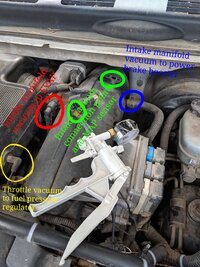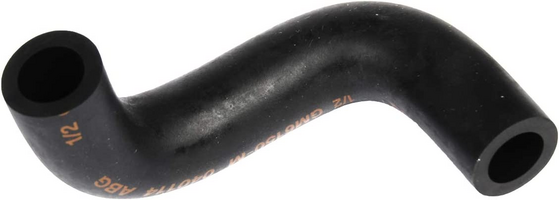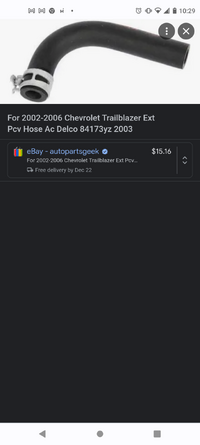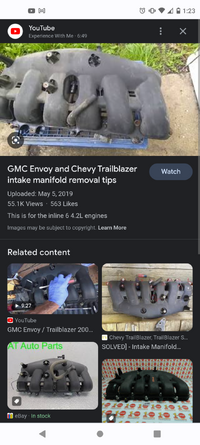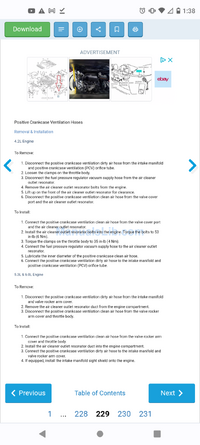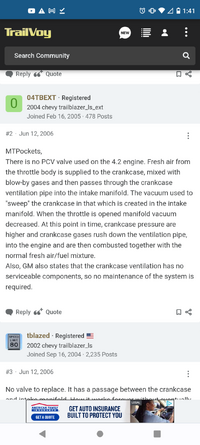I don't think this is electrical so I'm starting a new thread. You guys are going to know me well around here LOL I am determined to make this my truck for a lot more miles.
Yesterday I had all fluids checked, general service of oil change, checked transmission fluid, mentioned differential fluid looked good etc and a new fuel filter put in my 2002 trailblazer ls. If I need to be giving more details that matter, it's a 4.2l. 159,000 miles.
Is there anything touched / moved that could affect vacuum? Maybe something is common to be bumped if care isn't taken or maybe something connects to something else I should look at that they may have disrupted? I'm definitely not blaming the shop but since then, I've lost cruise control and while not a common explanation on google, I do see information that HVAC and cruise are somehow related. Additionally, there's a new very very high pitched ringing or whistle over 45 mph. At first I thought it was bearings or ball joints since they mentioned that is service I will need by the next oil change, but it reminds me more of a tiny hole where air is pushing through so hard it makes a sound that would probably be inaudible if I were 80 but still audible if I were a dog. Hope that helps explain what I'm hearing. It is super high-pitched. Almost sounds like someone was running their finger around the rim of a glass of water and making the highest pitch sound a human can create LOL it's not incredibly loud. I had to really focus to hear it. In fact if the window is down a little too far, road noise will overpower it. I don't hear it from the cabin at all with the window up all the way.
Thanks in advance.
Yesterday I had all fluids checked, general service of oil change, checked transmission fluid, mentioned differential fluid looked good etc and a new fuel filter put in my 2002 trailblazer ls. If I need to be giving more details that matter, it's a 4.2l. 159,000 miles.
Is there anything touched / moved that could affect vacuum? Maybe something is common to be bumped if care isn't taken or maybe something connects to something else I should look at that they may have disrupted? I'm definitely not blaming the shop but since then, I've lost cruise control and while not a common explanation on google, I do see information that HVAC and cruise are somehow related. Additionally, there's a new very very high pitched ringing or whistle over 45 mph. At first I thought it was bearings or ball joints since they mentioned that is service I will need by the next oil change, but it reminds me more of a tiny hole where air is pushing through so hard it makes a sound that would probably be inaudible if I were 80 but still audible if I were a dog. Hope that helps explain what I'm hearing. It is super high-pitched. Almost sounds like someone was running their finger around the rim of a glass of water and making the highest pitch sound a human can create LOL it's not incredibly loud. I had to really focus to hear it. In fact if the window is down a little too far, road noise will overpower it. I don't hear it from the cabin at all with the window up all the way.
Thanks in advance.

